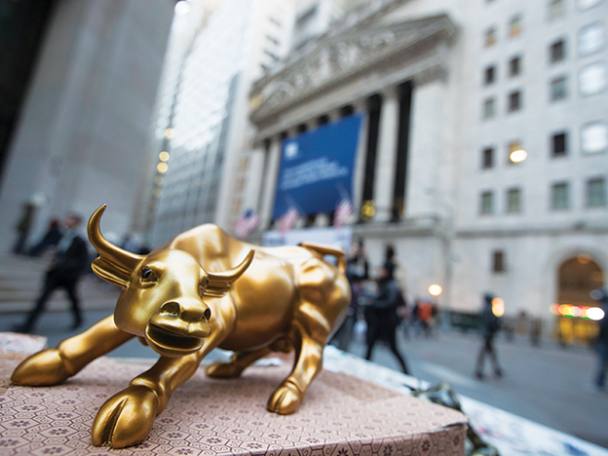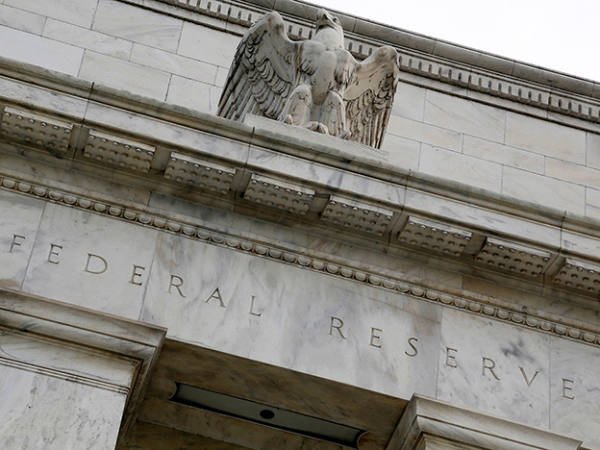When I was a callow graduate trainee I sat in on a meeting between my boss and a colleague. My boss was making a bearish case for sterling and his colleague asked: “Won’t rising interest rates strengthen the pound?” My boss replied: “That’s in the price by now.” After the meeting I asked him how we could tell what was in the price and what wasn’t. “We can’t,” he replied. “But saying so shuts people up.”
Thirty years on, the fact that global equities were recently unsettled by the prospect of a trade war reminds me that I still can’t tell what exactly is in the price and what isn’t. Donald Trump ran for president on an aggressively protectionist campaign, so a possible trade war should have been no surprise to markets at all. But it was. As Paul Krugman tweeted: “The really amazing thing is how long markets have stayed complacent about having someone vengeful, corrupt, and ignorant in the White House.”
Elementary theory, of course, tells me that I shouldn’t be so puzzled. The efficient market hypothesis says that all information should be immediately embedded into prices. The answer to the question: 'what’s in the price?' should therefore be: 'everything'. However, the fact that markets fell on the prospect of something as foreseeable as a possible trade war is only the latest reminder that this theory is, at best, only partially true.
A big reason for this is that there are tight limits on investors’ abilities to short-sell stocks. Some are explicitly forbidden from short-selling while others cannot do so sufficiently for fear that if prices rise only temporarily and irrationally they will have to raise cash to put up collateral against the shares they’ve borrowed. The more volatile or illiquid shares are, the greater is this danger. Bad news, therefore, often isn’t fully embedded into prices.
A further problem is that markets are prone to momentum: cheap ones get cheaper and expensive ones more expensive. It’s risky to bet against this and safer to go with the trend. As Charles Prince, then CEO of Citigroup said, “As long as the music is playing, you’ve got to get up and dance.” The investor who worried about the Bad Trump of protectionism would have lost a lot last year because most others were rejoicing in the Good Trump of fiscal expansion.
'What’s in the price?' is therefore a legitimate question because not everything always is.
In truth, we often can’t tell whether any particular piece of information is in a share price. But we can tweak the odds in our favour by looking at measures of investors’ sentiment. The more bullish is such sentiment the more likely it is that good news is in the price and bad news isn’t. When this is the case, markets are likely to be more sensitive to bad news than to good.
Malcolm Baker at Harvard Business School and Jeffrey Wurgler at Stern School of Business in New York have proposed ways of measuring sentiment. One way is to look at investment trust discounts: unusually narrow ones or premia (relative to the trust’s own history) are signs of high sentiment. High share turnover, lots of new equity issues, and big price rises on the first day of trading such issues are also all signs of bullish sentiment. So, too, they say, are high prices of shares that don’t pay dividends relative to shares that do.
'The really amazing thing is how long markets have stayed complacent about having someone vengeful, corrupt, and ignorant in the White House
I’d add other things to this list. High prices of Aim shares relative to mainline ones, big foreign buying of US shares, and a high ratio of share prices to the money stock are also indicators of strong sentiment.
Historically, it’s also been the case that the time of year is a sentiment indicator. Share prices have tended to be high in the spring – indicating that good news is more likely to be discounted than bad – and low in the autumn.
Indicators such as these are not necessarily great short-term predictors of returns. This is partly because exuberant investors can become even more exuberant in the short term. It’s also because over short periods it’s likely that there’ll be no significant news and therefore no good test of whether that news was already discounted or not.
In the longer run, however, sentiment can help predict returns. High sentiment leads to falling prices partly because sentiment tends to mean-revert but also because it tells us that good news is discounted while bad news is not – which means that nasty surprises are more likely than nice ones.
What’s more, say Professors Baker and Wurgler, measures of sentiment are especially good at predicting returns for those stocks that are most sensitive to sentiment, such as newer, less profitable ones, those in or near financial distress, and those that pay no or low dividends.
Although we cannot tell exactly what is in the price, then, we do have ways of telling whether good or bad news is more likely to be discounted. Several of these indicators tell us now that good news is more likely to be in the price: foreign buying of US equities; price-money ratios; Aim prices; and the time of year. This isn’t to say that prices will definitely fall. But it does mean there’s a high chance of them doing so, especially over the longer term.










